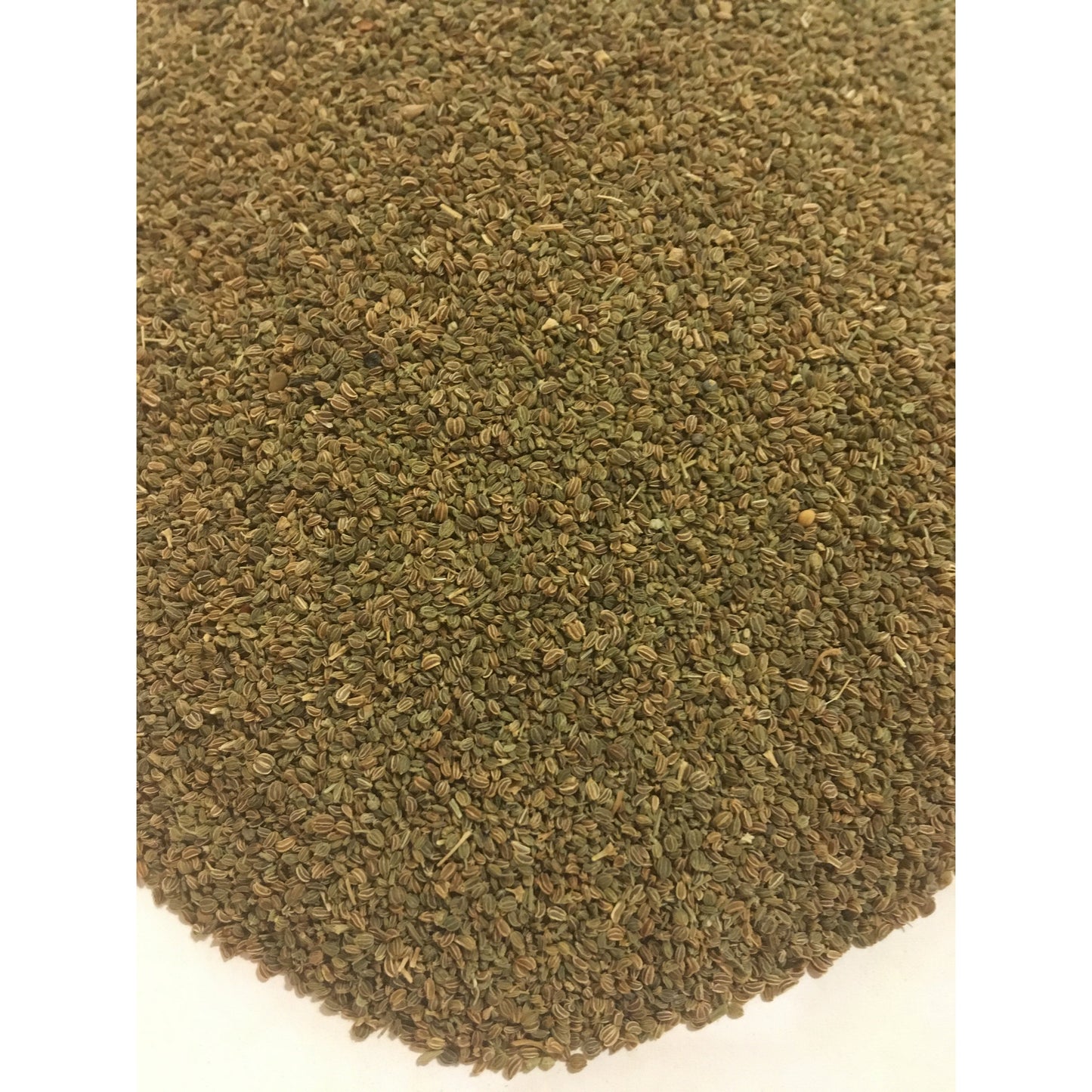Celery Seed
Celery Seed
Couldn't load pickup availability
Celery seed is used as flavoring or spice, either as whole seeds or ground. Actually very small fruit, Celery "seeds" as they are called yield a valuable essential oil (based on apiole) that is also used in the perfume industry.
I use the seeds in Cole Slaw dressing.
More celery history than you wanted to know: Celery leaves and inflorescences were part of the garlands found in the tomb of pharaoh Tutankhamun (died 1323 BC), and celery mericarps dated to the seventh century BC were recovered in the Heraion of Samos.
Only by classical times is it certain that celery was cultivated.
An archeological find of celery dates is use to the 9th century BC, at Kastanas; however, the literary evidence for ancient Greeceis far more abundant. In Homer's Iliad, the horses of the Myrmidons graze on wild celery that grows in the marshes of Troy, and in Odyssey, there is mention of the meadows of violet and wild celery surrounding the cave of Calypso. In the Capitulary of Charlemagne, compiled ca. 800, apium appears, as does olisatum, or alexanders, among medicinal herbs and vegetables the Frankish emperor desired to see grown. At some later point in medieval Europe celery displaced alexanders.
Celery's late arrival in the English kitchen is an end-product of the long tradition of seed selection needed to reduce the sap's bitterness and increase its sugars. By 1699, John Evelyn could recommend it in his Acetaria. A Discourse of Sallets: "Sellery, apium Italicum, (and of the Petroseline Family) was formerly a stranger with us (nor very long since in Italy) is a hot and more generous sort of Macedonian Persley or Smallage...and for its high and grateful Taste is ever plac'd in the middle of the Grand Sallet, at our Great Men's tables, and Praetors feasts, as the Grace of the whole Board".
Celery makes only a minor appearance in colonial American gardens; its culinary limitations were reflected in the observation by the author of A Treatise on Gardening, by a Citizen of Virginia that it is "one of the species of parsley." Its first extended treatment in print was in Bernard M'Mahon's American Gardener's Calendar (1806).[38] After the mid-19th century, continued selections for refined crisp texture and taste brought celery to American tables, where it was served in celery vases to be salted and eaten raw.
- packaged in a small zip-lock


